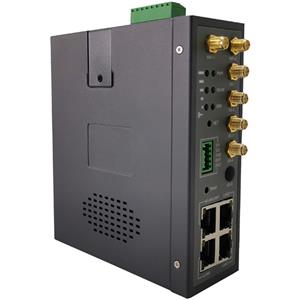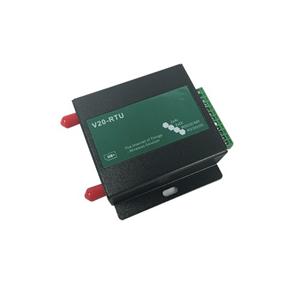Schmalbandiges Internet der Dinge unter 5G
Schmalbandiges Internet der Dinge unter 5G

Einige Leute sagen, dass die zweite Hälfte des Internets die Ära des Internets der Dinge ist. Dies ist nicht unbedingt eine falsche Aussage.
Unter der Leitung des Ministeriums für Industrie und Informationstechnologie veranstalteten die drei großen Telekommunikationsbetreiber und Unternehmen wie Huawei kürzlich gemeinsam den 5G NB-IoT "100 Millionen" Journey Industry Summit per Online-Live-Übertragung. Auf dem Treffen sagte Liu Yulin, stellvertretender Direktor der Abteilung für Informations- und Kommunikationsentwicklung des Ministeriums für Industrie und Informationstechnologie, dass die Betonung des Landes auf neue Infrastrukturen große Entwicklungsmöglichkeiten für aufstrebende Industrien wie 5G und das Internet der Dinge eröffnet habe. Es ist notwendig, die Bildung eines Entwicklungsmusters zu beschleunigen, das NB-IoT, 4G, 5G und andere Technologieleiter verwendet, um verschiedene Internet-of-Things-Verbindungen herzustellen.
IoT-Branchentechnologie mit breiten Geschäftsaussichten
Das Konzept von 5G ist seit langem tief in den Köpfen der Menschen verwurzelt, und was genau NB-IoT ist, ist einigen Menschen möglicherweise noch nicht klar.
NB-IoT ist die Abkürzung für Narrowband Internet of Things. Das sogenannte Schmalband-Internet der Dinge bezieht sich auf das Internet der Dinge, das auf einem Mobilfunknetz aufgebaut ist, das nur etwa 180 Kilohertz (kHz) Bandbreite verbraucht. Weil zellulare Datenverbindungen, die Geräte mit geringem Stromverbrauch in einem Weitverkehrsnetz unterstützen, auch als Weitverkehrsnetze mit geringem Stromverbrauch (LPWAN) bezeichnet werden.
"Derzeit verwendet der größte Teil des Schmalband-Internet der Dinge die 2G / 3G / 4G-Mobilfunktechnologie unter dem lizenzierten Frequenzband, das mit der Mobilfunkkommunikation unter 1 GHz geteilt wird und von der International Standardization Organization 3GPP unterstützt wird." Institut für Cyber-Angriffs- und Verteidigungstechnologie, Fakultät für Informatik und Technologie, Beijing Institute of Technology In einem Interview mit der Science and Technology Daily sagte Chang Yan Huaizhi, dass das Schmalband-Internet der Dinge ein Internet der Dinge mit geringer Bandbreite ist kann als Zweig des Internet der Dinge angesehen werden.
Im September 2015, nach der Gründung des Kooperationsprojekts 3GPP RAN in der dritten Generation, erhielt das Schmalband-Internet der Dinge die Aufmerksamkeit und Reaktion der überwiegenden Mehrheit der internationalen Betreiber, Systemausrüster und Terminalhersteller. Ein Kommunikationsstandard für das Internet der Dinge mit breiten Geschäftsaussichten und weltweiter Einheitlichkeit.
Heute, in der Luft von 5G, hat das Schmalband-Internet der Dinge eine größere historische Mission erhalten, wird Tausende von Branchen befähigen und dazu beitragen, die Verbindung aller Dinge zu realisieren. Liu Yulin sagte in einer Rede auf dem 5G NB-IoT "100 Millionen" Journey Industry Summit, dass China bis Ende 2019 mehr als 700.000 NB-IoT-Basisstationen gebaut habe, um eine kontinuierliche Abdeckung von Großstädten und Städten über dem Land zu erreichen und legt den Grundstein für die Entwicklung verschiedener Anwendungen. Gute Netzwerkgrundlage.
Erfüllen Sie die Anforderungen von mehr als 70% der IoT-Szenarien
Der Grund, warum das Schmalband-Internet der Dinge große Hoffnungen hat, wird durch seine eigenen Eigenschaften bestimmt. Im Allgemeinen weist das Schmalband-Internet der Dinge die Merkmale einer breiten Abdeckung, mehrerer Verbindungen, eines geringen Stromverbrauchs und geringer Kosten auf.
Eine breite Abdeckung wird den Status Quo der Abdeckung des Internets der Dinge in Innenräumen erheblich verbessern. Im gleichen Frequenzband hat das schmalbandige Internet der Dinge einen Gewinn von 20 dB im Vergleich zum bestehenden Netzwerk, was einem mehr als hundertmal erweiterten Versorgungsbereich entspricht. Mehrfachverbindung bedeutet, dass der einzelne Sektor 100.000 Verbindungen unterstützen kann. Aufgrund des geringen Stromverbrauchs beträgt die Standby-Zeit des Terminalmoduls 10 Jahre. Niedrige Kosten beziehen sich auf die niedrigen Modulkosten. Die Kosten für ein einzelnes Verbindungsmodul können auf 20 bis 30 Yuan reduziert werden.
"Because it is built on a cellular network, it can be directly deployed on a GSM (Global System for Mobile Communications) network, a UMTS (Universal Mobile Telecommunications System) network or an LTE (Long Term Evolution) network, which greatly reduces deployment costs and can be used on the existing network Smooth upgrade to quickly support industry market demand. "Yan Huaizhi said, the narrowband Internet of Things is considered to be one of the best solutions for the cellular network industry to deal with the Internet of Everything. The current application scenario is vertical industries such as public service or industrial control.
At the 5G NB-IoT "100 Million" Journey Industry Summit, Yang Tao, vice president of Huawei ’s China Carrier Business Department, stated that NB-IoT ’s features such as large connectivity, wide coverage, and low power consumption catered to more than 70% of IoT scenarios. demand.
At present, China's three major operators have achieved NB-IoT network construction and coverage in more than 300 cities, and provided billions of IoT special subsidies; at the same time, giant enterprises represented by Ali, Tencent, Huawei, Xiaomi, etc. It has also entered the Internet of Things.
Over the past three years, NB-IoT has achieved leapfrog development and has achieved scale implementation in multiple industries. In the four major areas of smart water meters, smart gas meters, smart firefighting, and smart electric bicycles, more than ten million narrow-band Internet of Things connections have been achieved; and smart manhole covers, smart door locks, tracking and positioning, smart street lights and other 10 industries have achieved more than Millions of narrowband IoT connections.
It is understood that in January 2020, the number of NB-IoT global connections exceeded 100 million; in February, the number of connections in China also exceeded 100 million. This marks that the NB-IoT industry has crossed the historical turning point and entered the stage of explosive growth. From the perspective of the distribution of operators, the number of NB-IoT connections of China Telecom and China Mobile has exceeded 40 million, while China Unicom has exceeded 10 million. It is expected that by the end of this year, the number of global 5G NB-IoT connections will double again.
Or trigger a disruptive innovation application revolution in many fields
Although the narrowband Internet of Things is developing rapidly, it still has deficiencies in many aspects.
The performance of Narrowband Internet of Things in terms of interoperability and consistency needs to be further improved; in terms of network coverage and infrastructure, the deployment and long-term support of Narrowband Internet of Things are greatly constrained by time and cost. For example, in terms of cost, although the cost of its modules has been reduced to less than 30 yuan, the overall cost of terminal module integration and application system adaptation is not considered to be relatively mature compared to 4G and 5G modules. Low; in terms of applications and business models, a complete partner ecosystem has not yet been established.
At the same time, NB-IoT is also facing fierce competition from other IoT connection technologies including LoRa. In addition, low-rate data transmission, privacy and security, IT system conversion time and other issues are also bottlenecks in its development.
Although the development of the mobile Internet of Things represented by NB-IoT has achieved breakthrough results, it also faces some challenges. At present, most of the NB-IoT connections in China are concentrated in a few cities, and there is still a lack of popularity throughout the country. A large number of base stations are in a light-load or no-load state; compared with advanced technologies such as 4G and 5G, 2G and 3G technologies The general utilization efficiency is low, but 2G and 3G IoT connections still account for a large share, accounting for nearly 20% of the new IoT connections. It is also necessary to accelerate the formation of 4G and 5G technology ladders to undertake various IoT connections Development pattern; network coverage needs to be further improved, and the NB-IoT network coverage level in some regions cannot fully meet the requirements of carrying 2G connection migration.
Industry standardization issues also need to be resolved urgently. In the past, China's IoT standards mainly focused on how to solve the connection problem between wireless terminals and networks. However, with the increasing application of NB-IoT, the standards of communication modules between enterprises have not been interoperable and are very messy. process.
In 2019, the NB-IoT technology is included in the IMT-2020 (5G) candidate technology proposal submitted by China. It is expected that in June this year, the International Telecommunication Union (ITU) will officially announce the 5G technology solution, and NB-IoT will become the mainstream technology of the future 5G IoT Just around the corner.
Mit dem Aufkommen der 5G-Ära wird NB-IoT seine Fähigkeiten in Bezug auf Multicast-Unterstützung, kontinuierliche Mobilität und neue Leistungsstufen unter Beweis stellen. Gleichzeitig wird die Verbesserung der Infrastruktur wie NB-IoT die echte Landung und Popularisierung von 5G fördern. In Zukunft wird die Integration von 5G- und NB-IoT-Technologien andere traditionelle Branchen stärken und sicherlich eine neue Runde disruptiver Innovationen und Revolutionen im industriellen Internet, im Internet der Fahrzeuge und in unbemannten Systemen auslösen.




